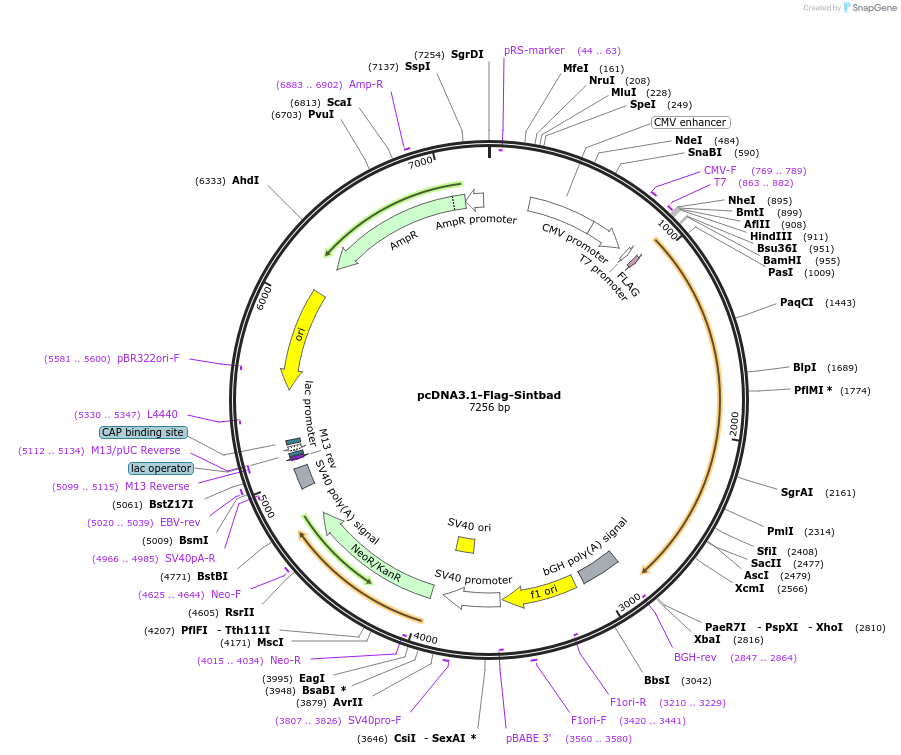pcDNA3.1-Flag-Sintbad
(Plasmid
#234668)
-
Purposeexpresses SINTBAD (TBKBP1) in mammalian cells
-
Depositing Lab
-
Sequence Information
Ordering
| Item | Catalog # | Description | Quantity | Price (USD) | |
|---|---|---|---|---|---|
| Plasmid | 234668 | Standard format: Plasmid sent in bacteria as agar stab | 1 | $89 | |
Backbone
-
Vector backbonepcDNA3.1
-
Backbone manufacturerInvitrogen
- Backbone size w/o insert (bp) 5428
- Total vector size (bp) 7254
-
Vector typeMammalian Expression
-
Selectable markersNeomycin (select with G418)
Growth in Bacteria
-
Bacterial Resistance(s)Ampicillin, 100 μg/mL
-
Growth Temperature37°C
-
Growth Strain(s)DH5alpha
-
Copy numberHigh Copy
Gene/Insert
-
Gene/Insert nameSINTBAD
-
Alt nameTBKBP1
-
SpeciesH. sapiens (human)
-
GenBank IDNM_014726.2
-
Entrez GeneTBKBP1 (a.k.a. ProSAPiP2, SINTBAD)
- Promoter CMV
-
Tag
/ Fusion Protein
- Flag (N terminal on backbone)
Cloning Information
- Cloning method Restriction Enzyme
- 5′ cloning site HindIII (unknown if destroyed)
- 3′ cloning site XbaI (unknown if destroyed)
- 5′ sequencing primer T7
- 3′ sequencing primer bGH poly(A) signal reverse
- (Common Sequencing Primers)
Resource Information
-
A portion of this plasmid was derived from a plasmid made bysynthesized by the company Biocat
Terms and Licenses
-
Academic/Nonprofit Terms
-
Industry Terms
- Not Available to Industry
Trademarks:
- Zeocin® is an InvivoGen trademark.
These plasmids were created by your colleagues. Please acknowledge the Principal Investigator, cite the article in which the plasmids were described, and include Addgene in the Materials and Methods of your future publications.
-
For your Materials & Methods section:
pcDNA3.1-Flag-Sintbad was a gift from Lienhard Schmitz (Addgene plasmid # 234668 ; http://n2t.net/addgene:234668 ; RRID:Addgene_234668) -
For your References section:
ULK1/2 Restricts the Formation of Inducible SINT-Speckles, Membraneless Organelles Controlling the Threshold of TBK1 Activation. Saul VV, Seibert M, Kruger M, Jeratsch S, Kracht M, Schmitz ML. iScience. 2019 Sep 27;19:527-544. doi: 10.1016/j.isci.2019.08.001. Epub 2019 Aug 6. 10.1016/j.isci.2019.08.001 PubMed 31442668



